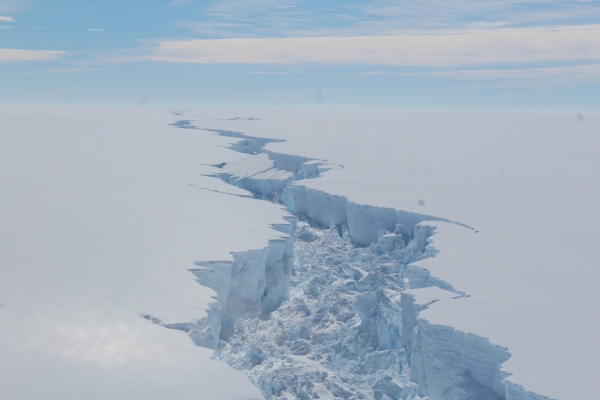New factors have been identified which contribute to record-high temperatures and ice melt over the eastern Antarctic Peninsula and Larsen C Ice Shelf.
The study, published today (13 July) in the journal Nature Communications, describes how distinct patterns of air circulation over the tropical Pacific Ocean can lead to the formation of intense atmospheric rivers. These long stretches of warm, moist air result in extreme high temperature events and ice melt when they move over the Antarctic Peninsula.
A team, including British Antarctic Survey researchers, used advanced modelling techniques to determine that these anomalous air circulation patterns are caused by thunderstorms and weather patterns resulting from hot air rising in the atmosphere in the central tropical Pacific east of Fiji. Variability in activity over this region was found to explain 40% of the year-to-year variability in melt over the summer period on the Larsen C ice self. It was also likely to be the cause of the two recent record-high Antarctic temperature events in March 2015 and February 2020, both of which led to record-high surface melting on the Larsen ice shelf.
Read more at British Antarctic Survey
Image: The rift in the Larsen C Ice Shelf shortly before calving of giant iceberg. (Photo Credit: BAS, Rosey Grant)


